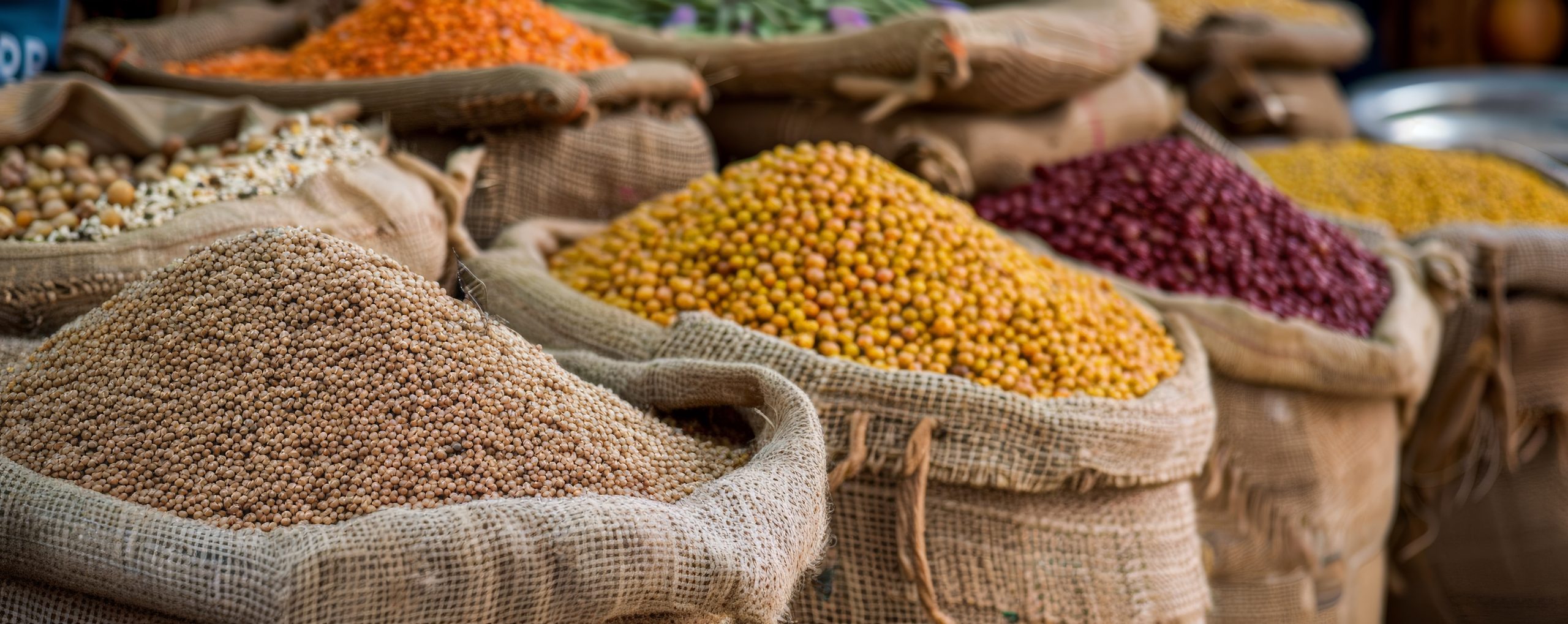Executive Summary
Pigeon pea prices are experiencing temporary volatility due to reduced kharif planting in India, but market fundamentals suggest a bearish outlook for the upcoming harvest season. Despite a 5% decline in Indian acreage and recent price spikes, global supply dynamics and duty-free import policies are expected to stabilize rates between $600-700 per tonne, significantly lower than last year's exceptional levels of $1,450 per tonne.
Market Shows Temporary Strength Amid Weather Concerns
The market has witnessed notable volatility in recent weeks, with domestic rates increasing by ₹2,000 per quintal. This surge coincides with heavy rainfall across India's pulse-growing regions, creating concerns about crop damage and reduced yields. However, experienced traders view this as a short-term phenomenon rather than a sustained bullish trend.
The immediate price pressure stems from uncertainty surrounding crop conditions, but market fundamentals suggest a different narrative for the medium term.
India Kharif Sowing Data Reveals Mixed Signals
Planting patterns have shown concerning trends for cultivation this season. The Ministry of Agriculture's latest data indicates:
- Overall kharif acreage growth has decelerated from 11% to just 4% in two weeks
- Planting area has declined by 5%
- Black matpe sowing has dropped by 12.5%
- Heavy rainfall has disrupted planting schedules across key growing regions
These sowing challenges have created immediate supply concerns, contributing to the recent volatility. However, the global supply picture tells a more nuanced story.
Pulse Market Trends Point Toward Price Normalization
Current market dynamics suggest that the recent spike may be temporary. Industry experts predict a 5% decline in rates during September-October, driven by several factors:
- Strong crop performance in competing origins
- India's duty-free import policy for key commodities
- Improved global supply availability compared to last year
The analysis indicates a shift from last year's exceptional circumstances, when El Niño effects severely impacted Indian production while global supplies remained tight.
Myanmar Pigeon Pea Imports Offer Relief
Shipments from Myanmar are playing a crucial role in stabilizing Indian markets. Current pricing shows:
- CNF offers at $725 per tonne (compared to $1,470 last year)
- Expected supply contribution of 350,000 tonnes
- Significantly improved competitiveness
These imports represent nearly 50% reduction compared to the previous year, providing substantial relief to Indian processors and traders. This dramatic improvement reflects normalized growing conditions in Myanmar after last year's supply constraints.
Global Supply Dynamics Shape Agricultural Commodity Trading
The market is being influenced by a complex interplay of global factors:
African Origin Contributions
- African nations expected to supply 1 million tonnes
- Previous year quotes of $1,250 per tonne from Mozambique
- Current pricing significantly more competitive
Supply-Demand Balance
- Total expected supply: 4.5 million tonnes (including India's 3.15 million tonnes)
- Indian consumption: 3.9-4 million tonnes
- Carryover stock: 310,000 tonnes
- Projected ending stock: Over 800,000 tonnes
This environment suggests a well-supplied market that should support stability rather than volatility.
Market Outlook and Trading Implications
The market presents a classic example of short-term sentiment versus long-term fundamentals. While immediate concerns about reduced Indian planting have created temporary strength, the broader supply picture suggests:
- Normalization toward the $600-700 per tonne range
- Ending stocks likely to increase substantially compared to previous years
- Import dependency continuing to provide ceiling effects
- Seasonal patterns expected to reassert themselves in Q4 2024
For traders and processors, this environment offers opportunities to secure supplies at reasonable rates while managing short-term volatility through strategic procurement timing.
Conclusion
The market is experiencing a transitional phase where immediate weather-related concerns are being offset by improved global supply fundamentals. While rates have shown temporary strength due to reduced India kharif sowing and weather disruptions, pulse market trends strongly indicate normalization ahead. The combination of competitive Myanmar pigeon pea imports, substantial African supplies, and India's duty-free import policies creates a supportive environment for end-users.
Agricultural commodity trading strategies should focus on the medium-term supply-demand balance rather than short-term volatility. With ending stocks projected to exceed 800,000 tonnes and total supplies reaching 4.5 million tonnes, the market appears well-positioned to meet demand while maintaining stability. Traders should view current levels as potentially attractive selling opportunities while preparing for a more balanced environment in the coming quarters.
For real-time market intelligence and data-driven insights on these commodities and other agricultural products, explore http://hectar.global, a comprehensive digital platform designed for modern commodity traders.ed for modern commodity traders.
